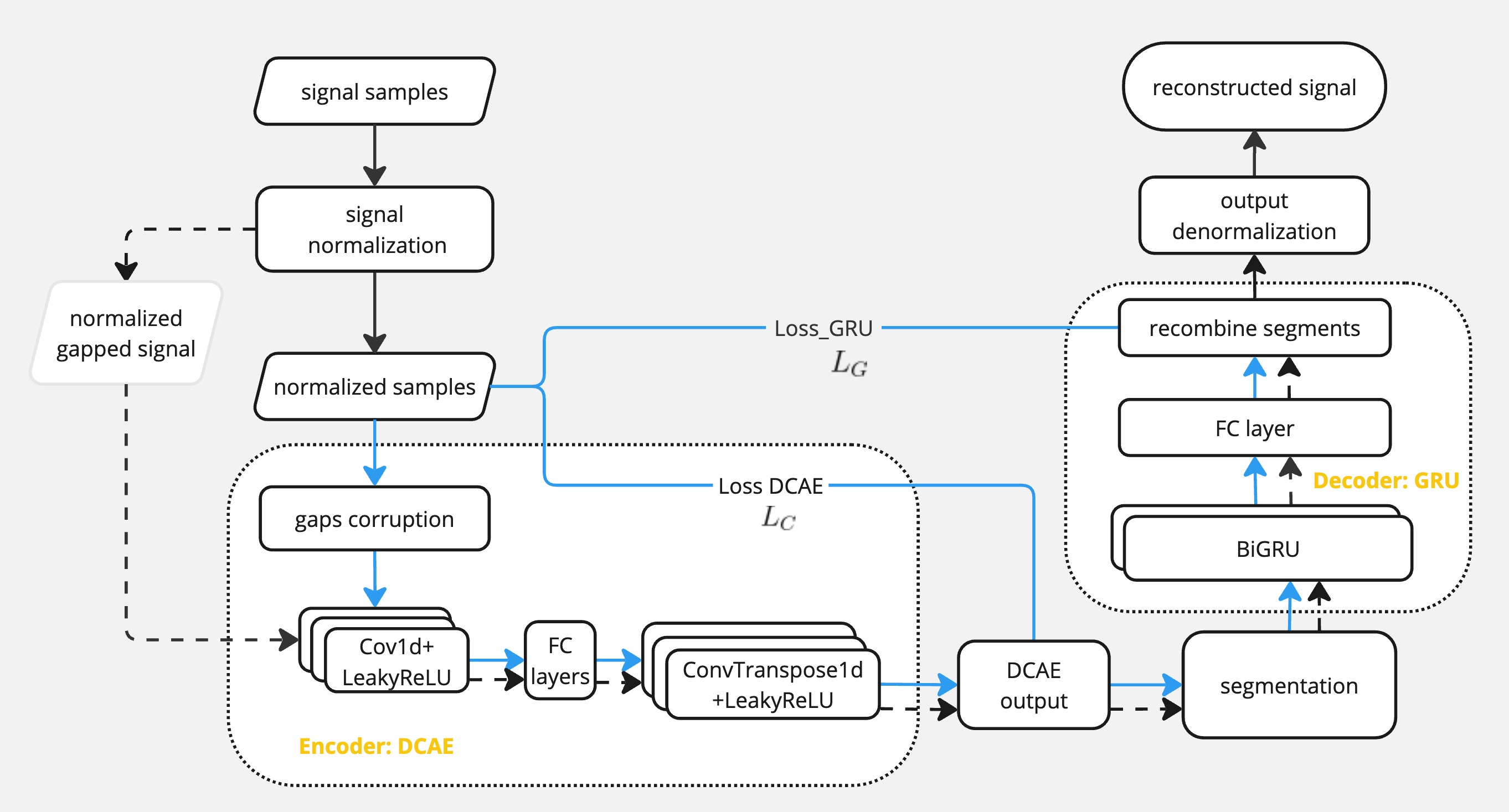The Laser Interferometer Space Antenna (LISA) data stream will contain gaps with missing or unusable data due to antenna repointing, orbital corrections, instrument malfunctions, and unknown random processes. We introduce a new deep learning model to impute data gaps in the LISA data stream. The stacked hybrid autoencoder combines a denoising convolutional autoencoder (DCAE) with a bi-directional gated recurrent unit (BiGRU). The DCAE is used to extract relevant features in the corrupted data, while the BiGRU captures the temporal dynamics of the gravitational-wave signals.
Here, we demonstrate the process of training BGR-CAE for the toy model signal with gaps.
We chose a toy model that describes a chirping waveform.
| parameter | default_value | uniform_training_range |
|---|---|---|
Our research paper is available on arXiv: A novel stacked hybrid autoencoder for imputing LISA data gaps.
Models Contains the method to generate data and gaps, as well as the setting for DCAE and Bi-GRU;
Training Contains two notebooks to train BiGRU-CAE:
- to train DCAE: Data are generated by models/data_generation.py, make sure to import the correct dataset;
- to train bi-GRU: Training data can be generated in training/train_dcae.ipynb or the notebook directly after importing the DCAE model.
training/test_signal_experiment.ipynb gives an example of implementing the model on a signal with gaps.
Evaluation Parameter estimation through MCMC is considered to test the performance of the recovery of the signal with gaps, see evaluation/parameter_estimation_MCMC.ipynb
- Install Anaconda if you do not have it.
- Create a virtual environment using:
conda create -n BGR_CAE_trial -c conda-forge numpy scipy matplotlib jupyter torch scikit-learn random corner tqdm statsmodels
conda activate BGR_CAE_trial
